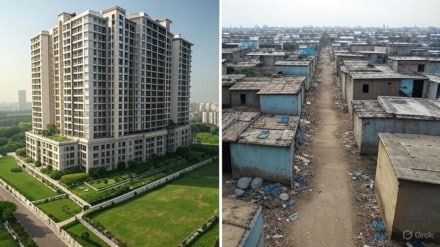Income inequality in India has crossed levels seen during British colonial rule. Hardik Joshi, a financial analyst, wrote a post on LinkedIn mentioning that it has become worse than British rule. He backed his statement with the findings from: the Income and Wealth Inequality in India, World Inequality Database (2024) & India Today, World Inequality Lab Working Paper
According to Joshi’s analysis, the top 1% of India’s population now holds a staggering 40.1% of the country’s wealth, while the bottom 50% collectively own a mere 6.4%. Furthermore, the top 10% reportedly earn over 57.7% of the national income.
“Half the country is fighting for crumbs while a tiny fraction lives in unimaginable luxury,” Joshi wrote, emphasising these figures.
The analysis attributes the following reasons for the income disparity:
- Tax policies that disproportionately favor the wealthy.
- Weak labor protections that leave workers vulnerable.
- Corporate consolidation that stifles small businesses.
- Gains from real estate and stock markets primarily benefiting those with existing capital.
- Political donations and lobbying that safeguard the interests of the affluent, preventing meaningful reforms.
Joshi asserts that this severe inequality is “not an accident. It’s policy,” and poses a provocative question: “Why isn’t anyone doing anything?” He argues that inequality does not harm those in power; instead, it benefits them. “They fund elections. They shape the media narrative. They lobby against redistribution. They convince the middle class that helping the poor is ‘handouts’ while they take subsidies and tax breaks.”
The analyst concludes that India’s challenge is not a “poverty problem” but a “distribution problem.” “We produce enough wealth. We just don’t share it fairly,” he stated. He advocates for a “real political will to tax wealth, strengthen labour rights, invest in health and education for all, and limit corporate concentration” as crucial steps to prevent the situation from worsening.
